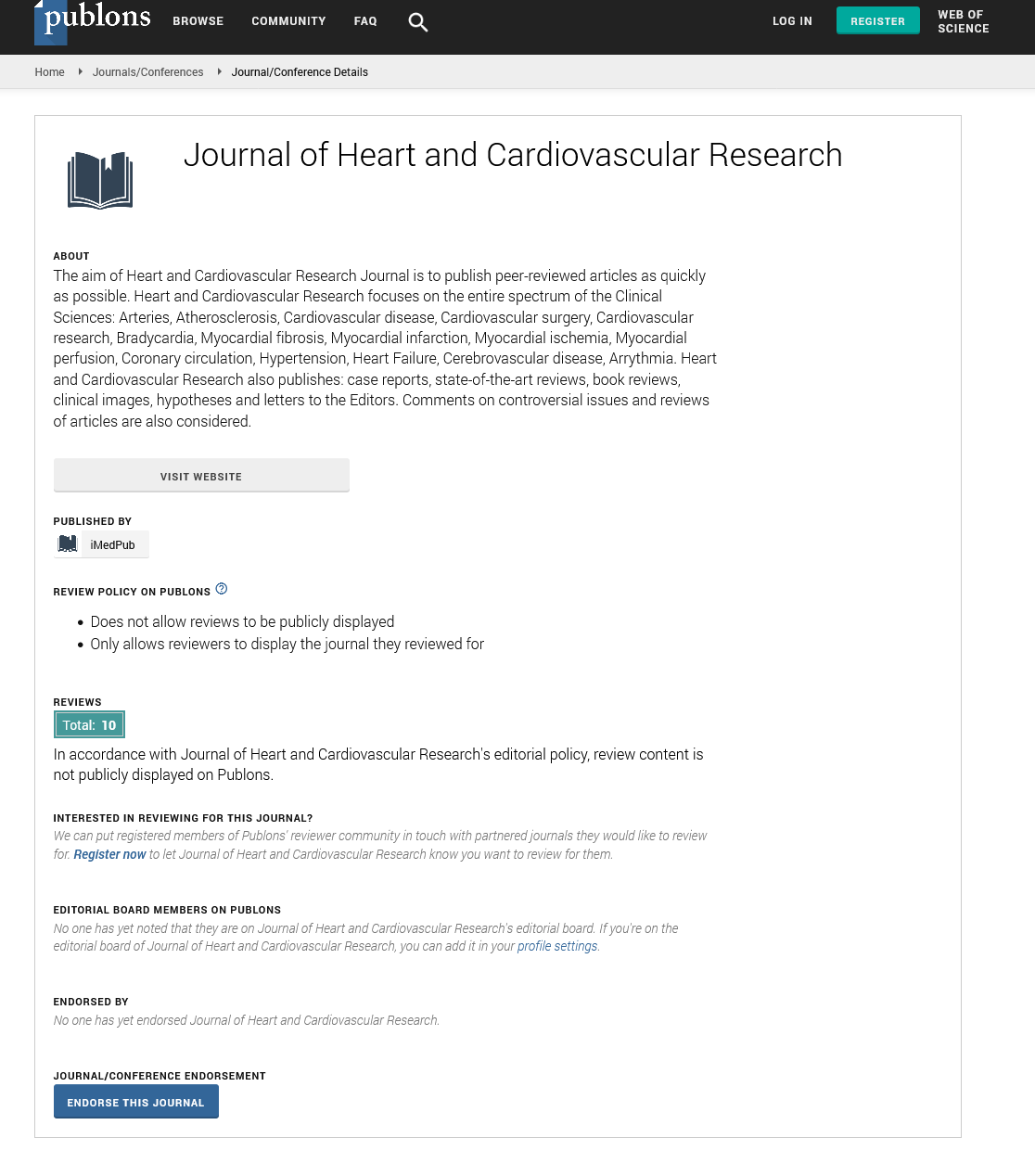ISSN : ISSN: 2576-1455
Journal of Heart and Cardiovascular Research
Abstract
Heart Congress 2020: Early Recognization of heart remodiling using imaging biomakers USING - Fatih Yalcin - Mustafa Kemal University Medical School
Introduction: Heart failure (HF) is a progressive process and gradually remodels heart tissue. In this course, we previously documented “predominant myocardial LV base and diminished regional LV basal cavity volume in LVH using real-time three dimensional imaging and predominant septal wall with blunted systolic regional function in myocardial performance analysis compared to free wall documenting that the importance of regional morphologic as well as functional features in remodeling process of heart failure. We also used exercise in hypertensive individuals as the external stressor using combined tissue analysis and exercise stress test to evaluate their adaptation and determine blood pressure and heart rate increase under stress for rate-pressure product representing hyperfunctional myocardial energetics in the early stage disease. To test and validate our clinical findings, we have planned microimaging studies. Therefore, we have detected ”focal hypertrophy of LV septal base (basal septal hypertrophy, BSH) is the early imaging biomarker of pressure-overload stress leading to heart failure.” Very recently, we have validated BSH with HYPERFUNCTION by a small animal study using 3 rd generation microscopic ultrasound. As the conclusion, early imaging biomarker, “BSH may support to early diagnosis of remodeling and effective medical therapy in a timely fashion.” Cardiovascular imaging in cardiovascular breakdown (HF) assumes 3 explicit jobs: imaging recognizes HF phenotype, surveys seriousness of systolic and diastolic brokenness, and screens reactions to mediations.To encourage early acknowledgment of HF, the American College of Cardiology/American Heart Association (ACC/AHA) practice rules for HF have separated the confusion into 4 phases, 2 of which (organizes An and B) are in asymptomatic people.Heart imaging procedures assume a critical job in characterizing irregular myocardial structure and capacity that show up at and past stage B. A phenotypic portrayal of HF into cardiovascular breakdown with decreased launch division (HFrEF) or protected discharge part (HFpEF) has likewise gotten typical. Be that as it may, banter exists with respect to whether these 2 are extremely 2 separate substances or simply speak to 2 distinct stages in the general continuum of HF.
To address the confinements in existing clinical HF orders, specialists have as of late utilized heart imaging procedures for underlining incorporation of imaging biomarkers, utilizing novel informatics stages to characterize remarkable HF persistent groups.Acknowledgment of such cardiovascular imaging-related HF phenotype, supported by omics methodologies, may at long last have utility in recognizing understanding subtypes who may profit by individualized HF treatments. This engaged update surveys fresher advancements in heart imaging systems, imaging biomarkers and their mix with customary measurements of cardiovascular structure and capacity appraisal for understanding the phenotypic introduction, setting up the particular causes, and managing the HF treatment. As an engaged update, we explicitly address new strides in incorporating the HF phenotypic introduction with ACC/AHA HF stages, evaluation of reasons for infiltrative disarranges with explicit models like heart sarcoidosis and amyloidosis, medication and remedial intercessions, and the novel utilization of scaled down pocket ultrasound gadgets for directing clinical HF treatments.
Author(s): Fatih Yalcin
Abstract | PDF
Share This Article
Google Scholar citation report
Citations : 34
Journal of Heart and Cardiovascular Research received 34 citations as per Google Scholar report
Journal of Heart and Cardiovascular Research peer review process verified at publons
Abstracted/Indexed in
- Google Scholar
- Sherpa Romeo
- China National Knowledge Infrastructure (CNKI)
- Publons
Open Access Journals
- Aquaculture & Veterinary Science
- Chemistry & Chemical Sciences
- Clinical Sciences
- Engineering
- General Science
- Genetics & Molecular Biology
- Health Care & Nursing
- Immunology & Microbiology
- Materials Science
- Mathematics & Physics
- Medical Sciences
- Neurology & Psychiatry
- Oncology & Cancer Science
- Pharmaceutical Sciences
